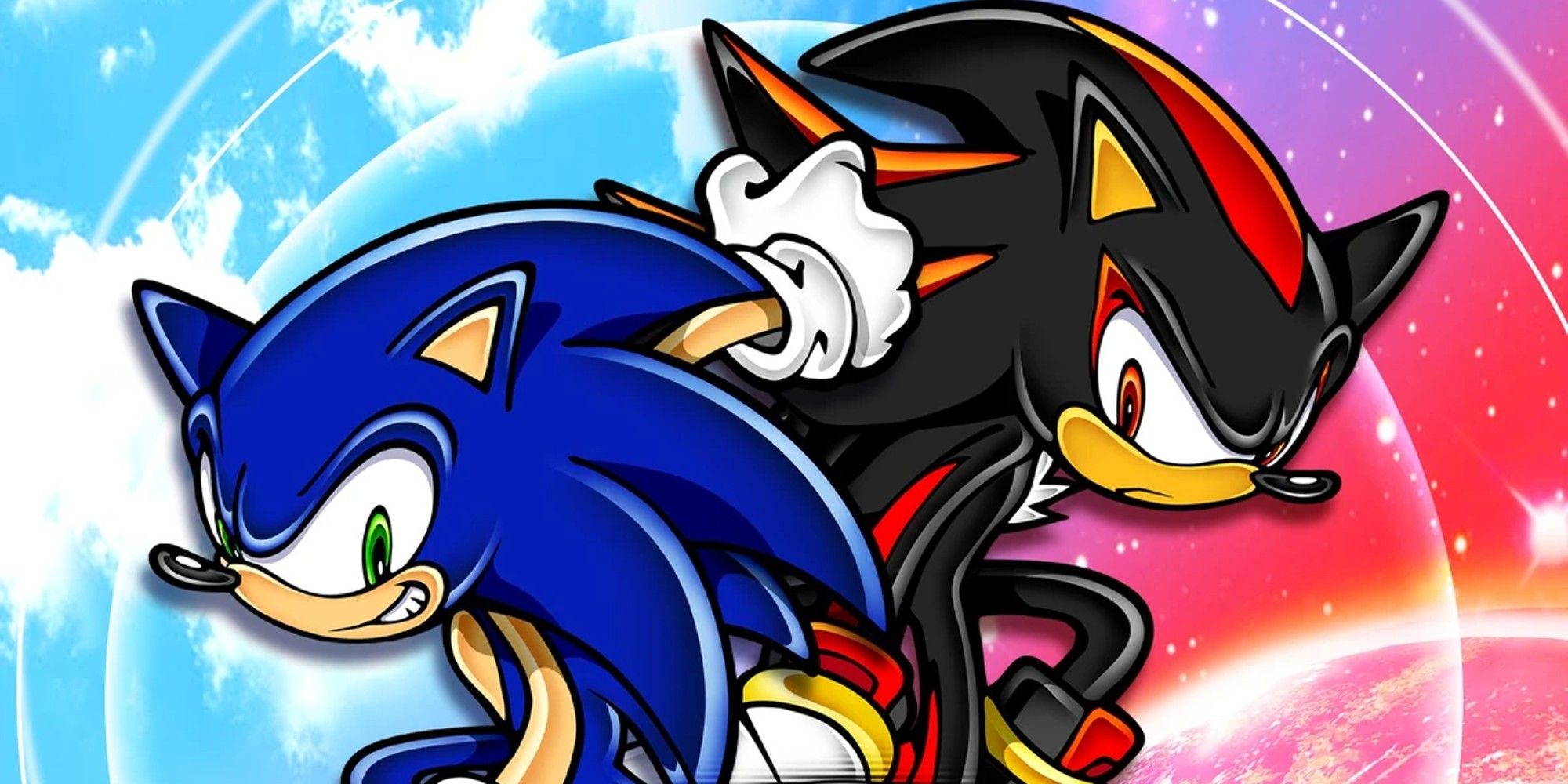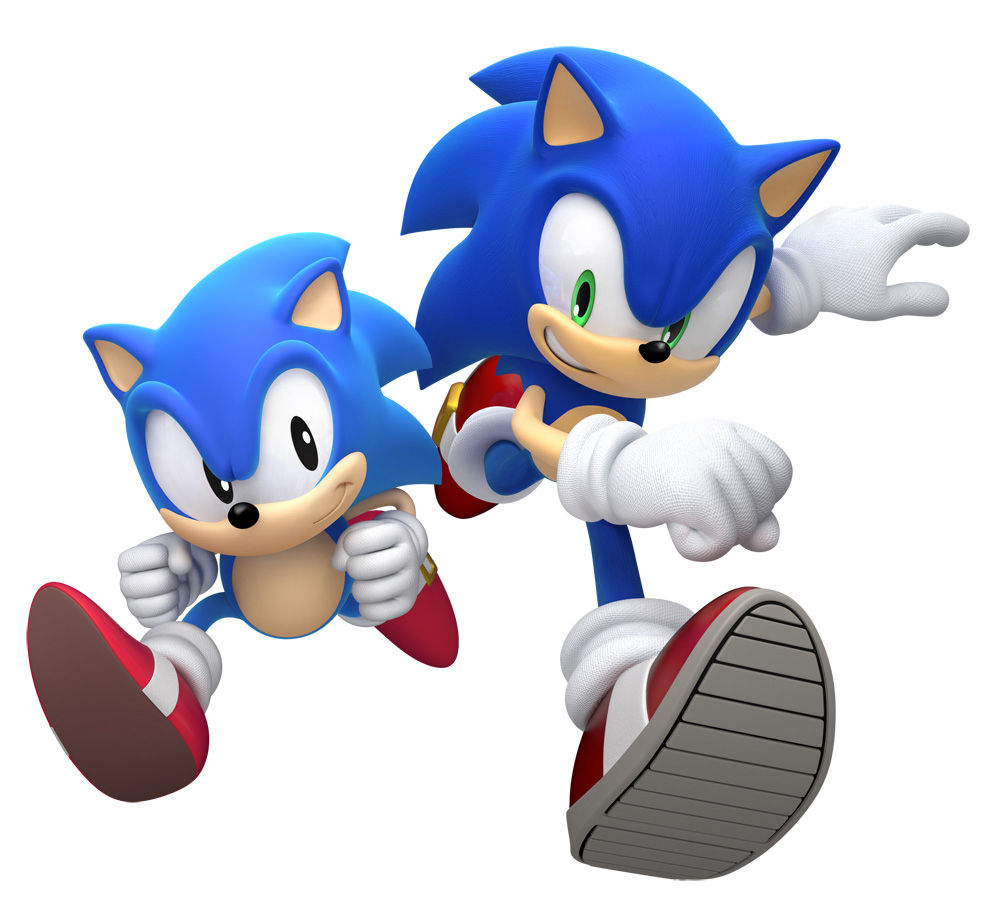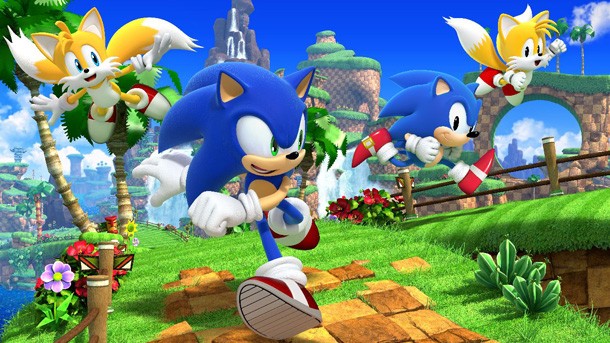Classic Era
This is the text that I want to indent. I want create a margin on both sides so that it doesn't go the full width of the page. Don't ask me why I want to do this. I just do!

Sonic’s debut game was released in 1991 titled “Sonic The Hedgehog”, made and published by SEGA. Though SEGA had been overshadowed by many gaming companies and developers, Sonic was their mascot that got them under the radar.
Sonic’s first game on the SEGA Genesis introduced many new things to gaming, such as speed-focused platforming, vibrant colors and character personality, and even different mechanics that enhanced gameplay. The overwhelming success from what is currently referred to as “Sonic 1” led to sequels to the game to be released, named “Sonic CD”, “Sonic 2”, and “Sonic 3 & Knuckles”, each enhancing mechanics from the previous game and adding many new abilities to the games.
These four games are adoringly called the “classic era” of Sonic The Hedgehog” by fans of the franchise. This era not only put Sonic on the map, but had SEGA, gaming underdog, competing with the likes of Nintendo, a titan in the gaming industry. With a reputation like this, Sonic was expected to keep up with the likes of other gaming icons, but many console performance flaws made his transition to 3D far from perfect.
This is the text that I want to indent. I want to create a margin on both sides so that it doesn't go the full width of the page. Don't ask me why I want to do this. I just do!
This is the text that I want to indent. I want to create a margin on both sides so that it doesn't go the full width of the page. Don't ask me why I want to do this. I just do!
Adventure Era

As many games were making the jump to 3D, Sonic was expected to make that jump too. With its poor attempt at “semi-3D” in the release of “Sonic 3D Blast”, SEGA was under pressure to put forth a worthy 3D experience onto their new console named the “Dreamcast”.
The release of “Sonic Adventure” came shortly in 1998, and though very dated, did terrifically on the Dreamcast and stands as the console’s best-selling game. It had a lot of personality, new characters, and fun gameplay elements, making it a beloved gem. Visually and gameplay wise, though, the game lacked what many others of the time achieved easily. Glitches, fixed camera angles, and a variety of other things became a hindrance on the game, and it became clear that the Dreamcast couldn’t compete with current consoles.
A sequel to Sonic Adventure titled “Sonic Adventure 2” was released in 2001, SEGA’s last night project for the Dreamcast. This game fixed many of the issues of its predecessor, with improved graphics, voice acting, and gameplay, but was still outdated compared to its competitors. Though the game was lacking in many aspects, such as certain mechanics and gameplay elements, it’s still appreciated amongst fans.
These two games are referred to as the “adventure era”, a transitional period for the franchise. Sonic’s transition to 3D was rocky, but was necessary to compete with the times’ expectations and advancements.
Advance/Boost Eras

After SEGA discontinued all hardware manufacturing after the failure of many of its consoles, it began releasing games on different companies’ hardware. In 2001, another 2D Sonic game was released under the title “Sonic Advance” for the “Gameboy Advance”, the first game in the trilogy. It was a major commercial success and added onto the formula from the classic era. New playable characters were released, people were interested in Sonic again, and all seemed well for SEGA, the trilogy getting called the “advance era”.
Shortly after the release of “Sonic Advance 3”, the last game in the trilogy, “Sonic Rush” was released on the “Nintendo DS” in 2005. This game invented a very popular mechanic for the series called “boosting”, making gameplay even faster and more eye-catching. It utilized both screens of the DS during level gameplay and made its own identity, making it a unique game amongst fans and critics alike. Despite some apparent flaws in the level design, Sonic Rush was well-received and beloved for its introduction to an adored character, amazing music production, and fun gameplay. It’s sequel was released under the name “Sonic Rush Adventure”, improving some things from the previous game but not getting the same attention from buyers.
“Sonic Colors” was released for the DS in 2010, and played very similarly to the Rush games, but lacked a different punch, getting rid of some mechanics and replacing them with new but adjustable ones. This was referred to as the “rush era”, a point where players could go as fast as they wanted and enjoy the design of the games.
These eras for Sonic weren’t perfect, but it was the fresh start that the mascot and its company needed when people were doubting the blue blur. Though not back to his original glory, this era introduced many things to the franchise that are still used and improved upon today. It was an experimental time for Sonic, but nothing went unappreciated.
Modern Era

Sonic has shown that through all the good, bad, and uncertain times that he’ll always bounce back and give consumers something to honor his legacy thus far. Even so, there were many mistakes that SEGA made that caused great harm to Sonic’s image. SEGA entered a strange period called the “modern era”, where they didn’t quite know what was next for their most beloved and well-known franchise.
In late 2003, they released “Sonic Heroes”, the first 3D Sonic game since the Dreamcast. It was an enjoyed game despite some gameplay flaws, and though it didn’t signal the return of Sonic’s peak, it was a good starting point. This was short-lived when “Shadow The Hedgehog” was released on the same day as “Sonic Rush”. With two wildly different games being released, it was hard to take the good with the bad. Shadow The Hedgehog, though a beloved character, was not a beloved game, and was slammed by critics for being too convoluted, confusing, and hard to play through.
It was definitely not what anyone was expecting, but there was still hope due to the good direction SEGA had been going in the last few years. This was the case, however, until “Sonic The Hedgehog” was released in 2006, informally referred to as “Sonic 06”. The game was a shock to all who played it, as the game was basically unplayable and riddled with bugs, insane loading times, and a sloppy story. It was clear that the Sonic franchise had taken a nose-dive, and wasn’t nearly as good as if had been at its peak.
Many lost hope for the games, but many others stuck around to see what else SEGA could come up with. “Sonic and the Secret Rings” was released in 2007, an artistically unique game with a driven story. Though not nearly as good as it could be in reference of its generic gameplay, was good in comparison to “Sonic 06”. It would take a lot more to earn its reputation back, so “Sonic Unleashed” was released in 2008. Though the gameplay and mechanics were top-notch, as well as it’s one-of-a-kind soundtrack, many people were put off by the introduction of the “werehog” transformation.
In 2009, “Sonic and the Black Knight” was released, where it introduced a very new mechanic for Sonic: a sword. Though overlooked, the game itself was not bad at all and could’ve used many tweaks, but that’s all. It wasn’t until 2010 that “Sonic Colors” came out, and seemed to be universally liked, but prone to criticism about its gameplay style. 2011 was a unique year for Sonic, as “classic era” Sonic was present in a modern game called “Sonic Generations”. Though empty and lacking a real personality, this game did a decent job of satisfying consumers who wanted to see “classic era” Sonic return. In 2013, “Sonic Lost World” released, and like many Sonic games before it, it received its fair share of criticism, often referring to the lacking level design and unserious story and characters.
“Sonic Boom: Rise of Lyric” released in 2014, and many were disappointing at the game’s blandness and almost soulless gameplay. A sequel was released in 2016 called “Sonic Boom: Fire and Ice”, and though better received, wasn’t enough of a difference to get a decent rating. A year later, “Sonic Forces” came out, and was immediately criticized for many of the same problems stated before: Lacking gameplay, strange physics, and character derailment.
It seemed like SEGA didn’t know what to do with their most charming icon, and when they announced their development on “Sonic Frontiers”, many were skeptical and even nervous about what this could mean for Sonic. Though there was much doubt about the game, “Sonic Frontiers” released in 2022 and was much better received amongst fans. Though criticized by some, these flaws could be forgiven as it was still a step in the right direction.
SEGA was able to create a good “modern era” game for the first time in a long time, and it made fans excited to see the franchise continue with its legacy in the future.
Odd Era
/cdn.vox-cdn.com/uploads/chorus_image/image/59059049/sonic_mania_art.0.jpg)
There is one more era of Sonic that many fans are still conflicted about when placing it, but it’s a universally beloved one with just a singular game. The game that every Sonic fan seemed to love was “Sonic Mania”, a classic-styled game released in 2017. Due to its direct ties to “Sonic Forces” and many classic era games, it quickly became highly rated amongst fans.
Interestingly enough, it was a game developed by long-time Sonic fans and developers, helping the game retain its charm and give genuine love back to its franchise. With great level design, past levels being redesigned, and characters with a lot of personality, it was no wonder why people loved it. The game was not released with the original classic-era games, and it is a 16-bit, 2D game that cannot be compared to modern-era games, so it has a category reserved for itself.
Conclusion

In conclusion, Sonic has had some disappointments, as sons releases were simply unacceptable for any game, let alone a former competitor with Mario. Even so, it’s still loved for the good times its’s had and it’s past impact on the gaming industry. There’s no doubt that the franchise can do better, and that’s a good reason to stick around for new content. The Sonic franchise flourished, stumbled, and failed, but it grew, and it’s given Sonic many roles to play throughout the ages. That’s enough for people to still have faith in it.






/cdn.vox-cdn.com/uploads/chorus_image/image/59059049/sonic_mania_art.0.jpg)
